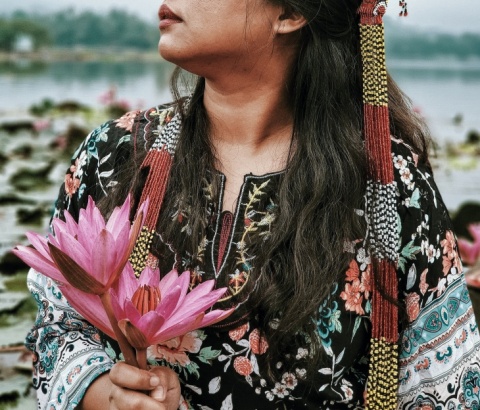What has Europe done to ensure an equal representation of men and women in Europe? The study “Electoral Lists ahead of the Elections to the European Parliament from a Gender Perspective”, published on the eve of the election to the European Parliamentary term 2014-2019, maps the representation of women and men on party lists at national level, provides key background information and analyses the effect of gender quotas on candidate lists.
European Parliament, are gender quotas
changing the rules of the game?

Women make up more than half of the European population. Studies reveal that nowadays the traditional gap in women's voters turn-out has been reduced or even reversed (Norris, 2002)[1] thanks to the youngest generations This is also true for the European elections where European women vote as much as their male counterparts (Eurobarometer:2009). But when it comes to being voted at any governance level, women are still a minority. Why so?
A complex set of reasons lies behind women’s absence from high-ranking political decision-making positions. First of all studies commonly suggest that women remain less involved than men in more demanding forms of civic engagement including political party activism due to gendered patterns of social capital forms (Inglehart and Norris, 2013)[2]. Mechanisms that are intrinsic to the way politics has operated up until recently still prevent women from breaking up the glass ceiling of political leadership. .
In recent years, efforts have been made to increase the share of women in political decision-making. The promotion of gender quotas has been one of the main tools adopted to promote this change in the European Union. The quota approach aims at contrasting two phenomena the low presence of women candidates in electoral lists and to avoid that they are relegated to the bottom half of candidate lists for elections with low chances of being elected. The European Parliament has become the preferential arena for change: as at 2014, about 35 % of women are members of the European Parliament, more than twice the share of 1979 when the first elections took place (16%). What is more, women’s share in the European Parliament has been consistently higher than the share in National Parliaments of individual Member States, where it currently stands at 7 pp lower on average (European Parliament: 2013).
The study “Electoral Lists ahead of the Elections to the European Parliament from a Gender Perspective”[3], published on the eve of the election to the European Parliamentary term 2014-2019, maps the representation of women and men on party lists at national level, provides key background information and analyses the effect of gender quotas on candidate lists.
The study reveals that although there are no gender quotas set at European Parliament level, a growing response from political parties and governments has been to introduce gender quotas for candidate selection, either in national legislation or at party level.
At Member State level, legislated quotas the European Parliament elections have been adopted in Belgium, Greece, France, Poland, Portugal, Slovenia, and Spain, with sanctions for non-compliance. Five countries have adopted legal sanctions (Belgium, Greece, Poland, Slovenia and Spain) and two countries have adopted financial sanctions (France and Portugal). In most of the countries which have adopted legislated gender quotas the national political parties have succeeded in implementing the quota provisions; apparently the sanctions for non-compliance seem to work, regardless of being legal or financial.
When it comes to voluntary mechanisms to enhance the share of women, many parties across Europe have also successfully implemented gender quotas. Furthermore, the study shows that most of the parties that use formal gender quotas are members of the Socialist and Democrats or Green/European Free Alliance group, but also parties to the middle and the right in the classic left-right dichotomy apply quotas. While placement mandates are not necessarily stipulated in the party statutes, they are implemented in practice in some cases, for example by the Greens in Austria, Alliance 90 – The Greens in Germany and LSAP in Luxembourg.
While the overall results of the study point to widespread adoption of gender quotas, the study points out that a formal requirement of a certain percentage of women on candidate lists may result in no women being elected, if the female candidates are put at the bottom of the list. Quota levels vary across Europe from 20 per cent to 50 per cent, along with the existence or non-existence of rank ordering rules. This means that some parties which have adopted party quotas may still be quite far from having an equal representation of women and men in party lists. Even a 50-50 regulation, where women and men are alternated on the list, may result in the election of only men.
However, even if quotas can change the rules of the game, they cannot change the mind of the players. Women might be reticent to run for office. In Ireland, parties are struggling to find candidates to fill the 30% quota of women candidates on candidate lists to local elections. Even with quotas, projections regarding the share of women in the European Parliament show only a slightly improvement in the next term. Empowerment and awareness-raising activities are needed as much as gender quotas to achieve parity: some examples include the 50/50 Campaign, launched by the Women’s lobby with financial support of the European Commission and the Gender Audit Report of Electoral Lists and Political Programmes.
Women have come a long way since 1979, yet the gap in representation is not likely to be closed during the next term. More needs to be done to ensure that their participation in politics is no more a matter of quotas. The future is in the hands of Europeans voters this Sunday.
[1] Norris P. (2002), women's turn.out at the ballot box in Voter turn-out since 1945: a Global Report available at:
http://www.idea.int/publications/vt/upload/Voter%20turnout.pdf
[2] Inglehart R. and Norris P. (2006), 'Gendering social capital. Bowling in women's league' in O'Neill B. and Gidengil E., Gender and Social Capital, pp. 73-97.
[3] Authored by Lenita Freidenvall, Hedvig Stahre, Silvia Sansonetti,and Fondazione Giacomo Brodolini with the overall linguistic revision of Elisabeth Victoria Lasky.










